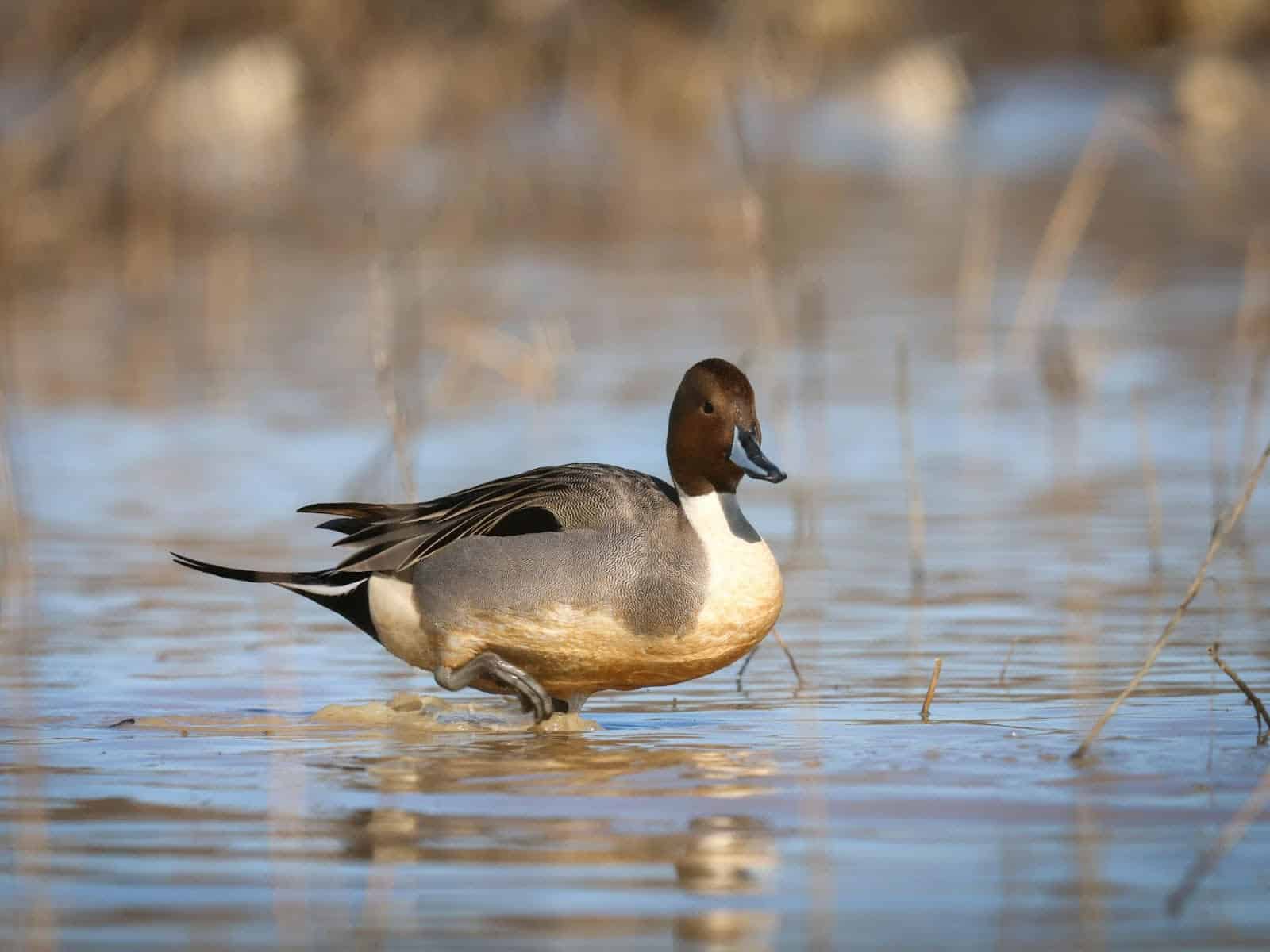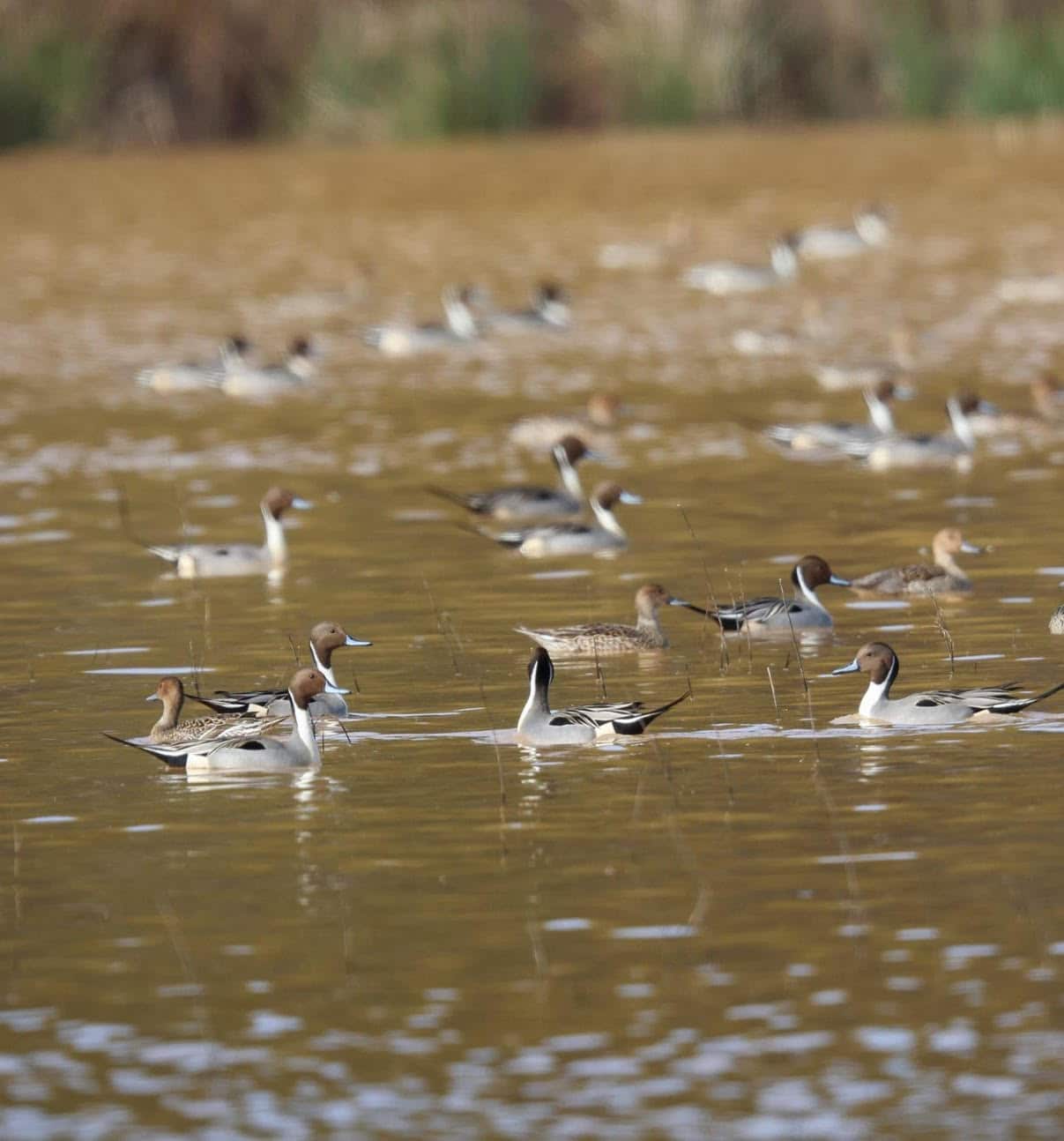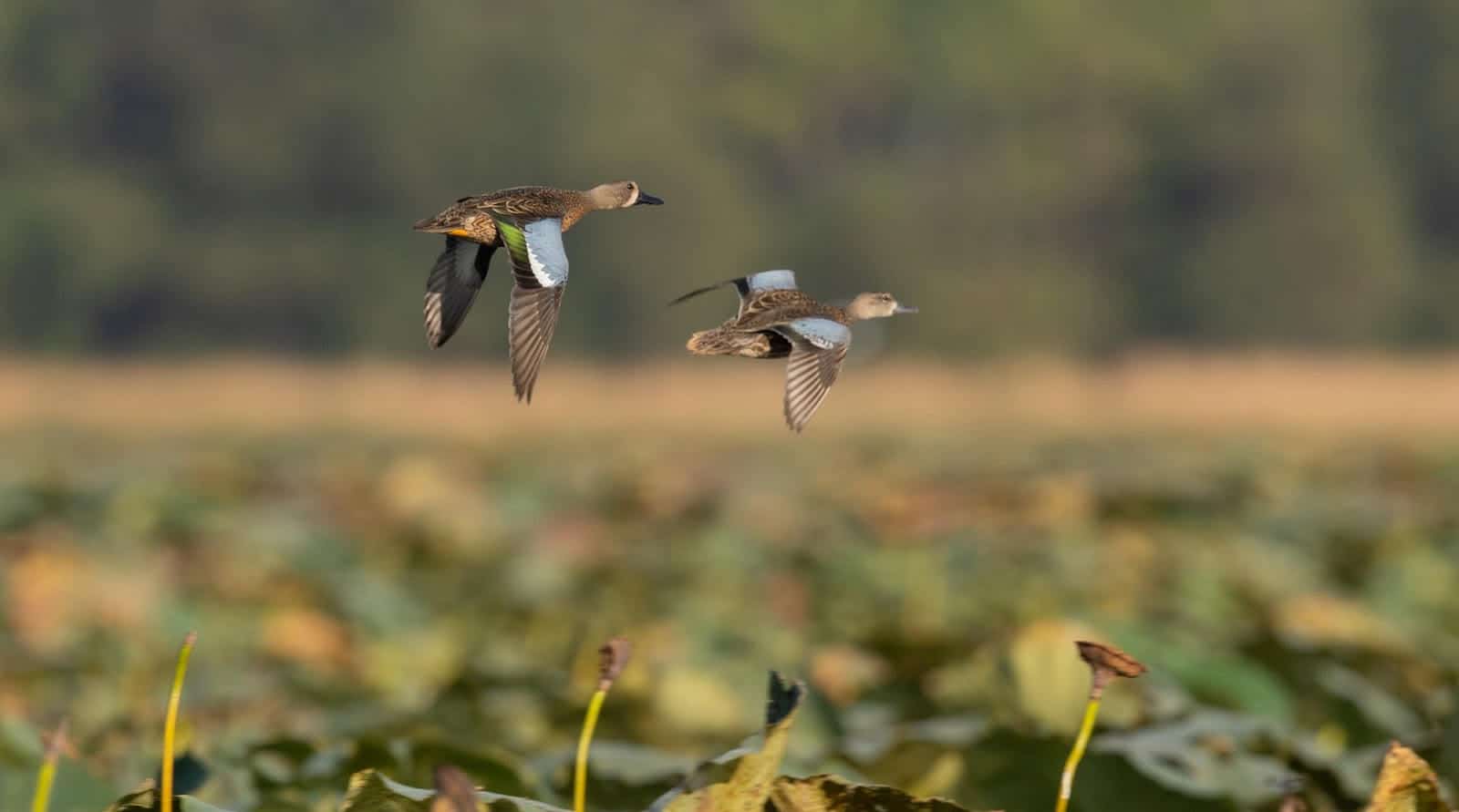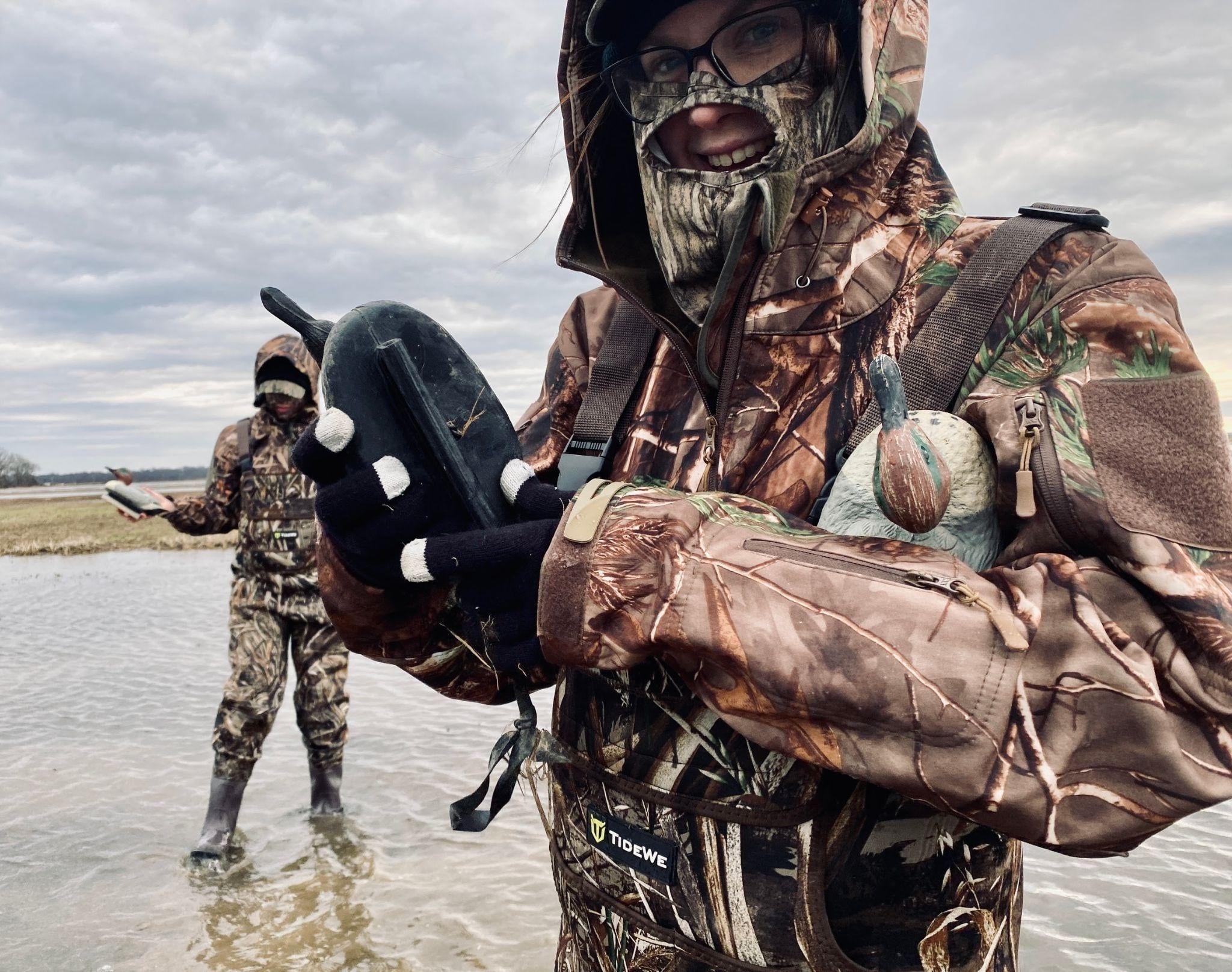Pintail bag limit increased for 2025-26 waterfowl season, special teal hunt shortened
ON 04-29-2025

LITTLE ROCK — Arkansas duck hunters will be able to put a couple of extra pintails in their daily bag if the opportunity presents itself this winter, according to an interim harvest strategy being implemented by the U.S. Fish and Wildlife Service in cooperation with the four Flyway Councils.
Arkansas’s 2025-26 waterfowl season will be as follows:
Special Early Teal Season: Sept. 20-28, 2025
Duck, Coot and Merganser Seasons: Nov. 22-Dec. 1, 2025; Dec. 10-23, 2025; Dec. 27, 2025-Jan. 31, 2026
Special Youth, Active-Duty Military and Veteran Hunt (PROPOSED): Feb. 7-8, 2026
Early Canada Goose Hunt: Sept. 1-Oct. 15, 2025
Regular Canada Goose Season: Nov. 22-Dec. 1, 2025; Dec. 10-23, 2025; Dec. 27, 2025-Jan. 31, 2026
White-fronted Goose Season: Oct. 25-Nov. 2, 2025, Nov. 22-Dec. 1, 2025; Dec. 10-23, 2025; Dec. 27, 2025-Jan. 31, 2026
Snow, Blue and Ross’s Goose Season: Oct. 25-Nov. 2, 2025; Nov. 22-Dec. 1, 2025; Dec. 10-23, 2025; Dec. 27, 2025-Jan. 31, 2026
Light Goose Conservation Order: Feb. 1-6, 2026; Feb. 9-April 25, 2026
Although the 2024 pintail population of 1.98 million birds is lower than the long-term average, all four Flyway Councils and USFWS have recommended moving the daily limit to three birds for the 2025-26 season under the new interim harvest strategy.
“As we continue to study waterfowl populations, we are learning more and more about what drives increases and declines,” AGFC Wildlife Management Chief Luke Naylor said. “The models for pintails are being updated to reflect the latest data, and we consistently see that daily bag limits play a much lower role in population dynamics than other factors like declining habitat.”
Naylor explained that most of the decline from the long-term average actually occurred more than 40 years ago through habitat loss on their nesting grounds and that the pintail population has been fairly stable since the 1980s.
According to Naylor, pintails historically nested in shortgrass prairie that was much more sparsely vegetated than what other ducks used. This was prime ground for conversion when modern machinery increased the scale of agriculture in the Prairie Pothole Region of the U.S. and Canada.
“That wheat stubble that replaced the shortgrass prairies can still provide some cover, but it doesn’t sit fallow long enough to provide the habitat needed throughout the nesting, laying and brood-rearing process before it’s manipulated for the next crop,” Naylor said.

The topography of those traditional pintail prairies was also a bit flatter, with shallower potholes and temporary wetlands that are much more susceptible to drying out during even moderate droughts. This too was exacerbated by land conversion.
“Again, habitat, or lack thereof, appears to be the key issue driving this population’s dynamics, not hunting,” Naylor said.
The interim harvest strategy of a three-pintail daily bag limit is a cautious step toward offering more opportunity for hunters for those few hunts during the season when they have the chance to add an additional pintail or two to their bag limit.
Pintails are not a huge part of an Arkansas hunter’s harvest, but The Natural State is a higher harvest state in the Mississippi Flyway.
“The interim strategy calls for three years of this higher limit when supported by pintail population status, with evaluations and monitoring to keep an eye on any population effects,” AGFC Waterfowl Program Coordinator Brett Leach said. “As one of the leading states in the Mississippi Flyway in pintail harvest, it’s important that we work within this new strategy to accurately measure effects. The strategy calls for three years of a three-bird bag, but those seasons do not need to be consecutive. It just so happens that the population estimate during the first year of the new strategy supported an increased daily bag limit.”

Another change comes as a reduction in hunting days this season, with the annual special early teal season being reduced from 16 total days to 9.
Blue-winged teal population estimates dropped to 4.6 million birds during last year’s Waterfowl Breeding Population and Habitat Survey. This triggered a shortening of the special season for teal throughout the flyway.
“At greater than 4.7 million birds, the management plan calls for a 16-day early season for hunters to have more opportunity to harvest these early migrants,” Leach said. “We’ve dropped under that threshold, so the more conservative early season of nine days was enacted in the federal frameworks. We have set the season to still take advantage of two full weekends at the end of September.”
Leach points out that although Arkansas typically harvests fewer than 25,000 blue-winged teal, Minnesota, Louisiana and Texas harvest the species in much greater numbers, and the framework applies throughout the Mississippi, Atlantic and Central flyways. (The Pacific Flyway does not have an early teal season.)
At first glance the two measures may seem counterintuitive, but Naylor explains that the reason behind the diverging strategies lies in the adoption of new models in one species, but reliance on an established model in the other.
“Our current population threshold for blue-winged teal is based on the assessment of teal harvest potential developed in 2015, and the interim pintail strategy is the beginning of a new adaptive harvest model being used for that species,” Naylor said. “The data has not come far enough along to change the teal strategy, yet. Additionally, this is a measure where we’re removing what were essentially extra days beyond the 60-day regular duck season, and you’re still allowed up to six blue-winged teal. The role that harvest may play into this species’s population dynamics still needs to be researched, but with most wildlife populations, the timing and number of days in which hunting pressure is applied is much more impactful than the number of birds allowed in the bag limit.”
####
CUTLINES:
PINTAIL DRAKE
Arkansas hunters harvest fewer than 30,000 pintails annually, but Arkansas is one of the larger pintail harvest states in the Mississippi Flyway. AGFC photo.
GROUP OF PINTAILS
Much of the pintail’s decline occurred more than four decades ago from conversion of shortgrass prairies. AGFC photo.
TEAL IN FLIGHT
The additional opportunity in September to harvest blue-winged teal has been shortened from 16 to nine days. AGFC photo.
Recent News

Waterfowl Report: Better Conditions Greet Hunters
Dec. 12, 2025
Subscribe to Our Weekly Newsletter E-mails
Don’t miss another issue. Sign up now to receive the AGFC Wildlife Weekly Newsletter in your mailbox every Wednesday afternoon (Waterfowl Reports are published weekly during waterfowl season and periodically outside the season). Fishing Reports arrive on Thursdays. Fill in the following fields and hit submit. Thanks, and welcome!

